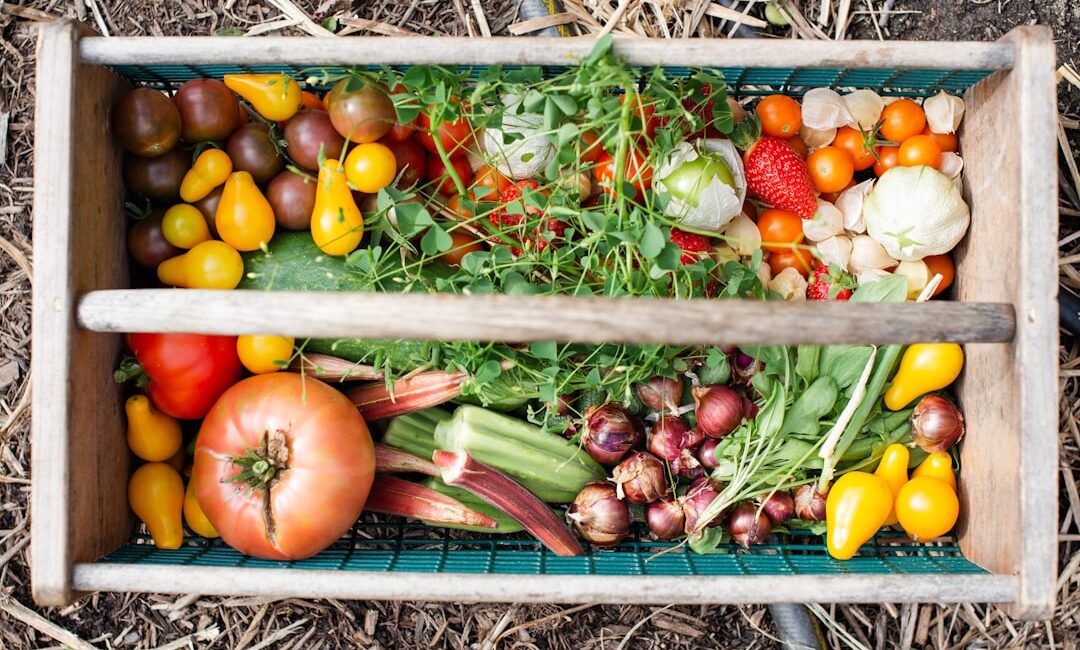Summary
Starting a vegetable garden can seem daunting, but with the right guidance, it can be a rewarding and productive experience. To begin, it’s essential to choose the right location, considering factors such as sunlight, accessibility, and level ground. Ideally, a vegetable garden should receive at least 6 hours of full sun a day, and be situated near a water source. Preparing the soil is also crucial, involving the evaluation of pH levels and nutrient content, and making necessary amendments to create a fertile environment. This includes testing the soil, adding organic matter such as compost or manure, and adjusting the pH level if necessary. When it comes to selecting suitable vegetables, consider factors like climate, soil type, and personal preference, and start with easy-to-grow plants like tomatoes, cucumbers, and zucchini. Planting techniques also play a critical role, requiring careful consideration of soil preparation, seed depth, and spacing. Understanding the specific needs of each plant variety, such as the right planting time, soil temperature, and moisture levels, is crucial for optimal growth. Additionally, companion planting and succession planting can be employed to enhance growth, flavor, and pest resistance.
Proper watering and maintenance are also vital, involving consistent moisture levels, adequate care, and effective practices like mulching, fertilizing, and pruning. To enjoy a bountiful harvest, it’s essential to understand the key aspects of harvesting your produce, including timing and the specific requirements for each type of vegetable. Furthermore, dealing with weeds is an essential aspect of maintaining a healthy and productive garden, involving effective strategies like mulching, hand-weeding, and using physical barriers. A Seasonal Planting Guide is also a valuable resource, providing a framework for planning and maintaining a thriving vegetable garden throughout the year. By considering factors such as climate, soil conditions, and daylight hours, gardeners can create a customized planting schedule tailored to their specific region and needs. By following these expert tips and understanding the key learnings, beginners can set their gardens up for success and enjoy a continuous supply of fresh, delicious produce from their garden, making all their hard work and dedication worthwhile, and achieving their goal of learning how to start a vegetable garden. By mastering these fundamentals and being prepared for challenges, you’ll be on your way to growing your own delicious vegetables and enjoying fresh produce from your very own garden in no time, and reap the benefits of connecting with nature, eating healthier, and enjoying a sense of accomplishment that comes with growing your own vegetable garden.
For many people, growing their own vegetable garden is a dream come true, providing an opportunity to connect with nature, eat healthier, and enjoy a sense of accomplishment. Yet, for those new to gardening, the idea of starting from scratch can seem overwhelming. With so many factors to consider, from choosing the right location to preparing the soil and selecting the right plants, it’s easy to feel unsure about where to begin. As it turns out, growing a thriving vegetable garden is within reach, even for those with little to no experience. By following a few simple steps and tips from trusted sources such as the University of Maryland Extension, The Spruce, and WikiHow, you can create a productive and enjoyable garden that provides fresh produce all season long. In this article, we’ll explore the essential steps to starting a vegetable garden, from planning and preparation to planting and care, and provide you with the knowledge and confidence to get started on your gardening journey. Let’s get started.
Choosing the Right Location

When it comes to starting a vegetable garden, one of the most critical decisions is choosing the right location. A well-located garden can make all the difference in the success of your harvest, as it directly affects the amount of sunlight, water, and care your plants receive. Ideally, a vegetable garden should receive at least 6 hours of full sun a day, although some plants can tolerate partial shade. In addition to adequate sunlight, it’s essential to select a spot with level ground to ensure even water distribution and prevent soil erosion. Furthermore, the location should be accessible to a water source, making it easier to maintain the garden’s moisture levels. By carefully evaluating the site, gardeners can create an optimal environment for their vegetables to thrive.
When evaluating a potential location for a vegetable garden, it’s essential to consider sunlight and shade requirements as well as the site’s accessibility and levelness. A spot with at least 6 hours of direct sunlight per day is ideal for most vegetables, although some plants like lettuce and herbs can tolerate partial shade. In addition to sunlight, the area should have level ground to prevent waterlogging and ensure even drainage. The site should also be accessible for regular maintenance, watering, and harvesting, with a nearby water source being a significant advantage. By carefully selecting a location that meets these criteria, gardeners can set themselves up for success and enjoy a productive and thriving vegetable garden throughout the growing season, which will be further discussed in the following sections on understanding the local climate and planning the garden’s size.
Preparing the Soil

Preparing the soil is a crucial step in starting a vegetable garden, as it provides the foundation for healthy plant growth and optimal yields. Soil preparation involves evaluating the pH level and nutrient content of the soil, and making necessary amendments to create a fertile and well-draining environment. A well-prepared soil is essential for seed germination, root development, and plant growth. According to gardening experts, the first step in preparing the soil is to test its pH level and nutrient content, which can be done through a soil testing kit or by sending a sample to a soil testing laboratory for analysis. This information will help determine if the soil needs amendments, such as organic matter, fertilizers, or lime, to adjust the pH level and improve soil fertility.
When it comes to preparing the soil, there are several key aspects to consider in order to create a fertile and supportive environment for your vegetables to grow. A crucial step is to test the soil pH and nutrient content, which can be done with a DIY kit or by sending a sample to a lab for analysis. Based on the results, you may need to add organic matter such as compost, manure, or peat moss to adjust the pH level and provide essential nutrients. Additionally, incorporating organic matter can help to improve soil structure, increase the water-holding capacity, and support beneficial microbial activity. By taking the time to properly prepare the soil, you’ll be setting your vegetable garden up for success and creating a solid foundation for healthy plant growth and maximum yields. With the soil preparation complete, you’ll be ready to move on to the next step: planting and caring for your garden, where you’ll learn how to put your newly prepared soil to use and nurture your vegetables to maturity.
Selecting Suitable Vegetables

When it comes to starting a vegetable garden, selecting suitable vegetables is a crucial step that can make or break the success of your garden. With so many varieties to choose from, it’s essential to consider factors such as climate, soil type, and personal preference to ensure that you’re growing vegetables that will thrive in your garden. For beginners, it’s best to start with easy-to-grow plants like tomatoes, cucumbers, and zucchini, which require minimal care and can tolerate some mistakes. Other key aspects to consider when selecting vegetables include growing conditions, space requirements, and disease resistance. By choosing the right vegetables for your garden, you’ll be able to enjoy a bountiful harvest and minimize the need for pest control and fertilizers. Researching different types of vegetables and their specific needs can help you make informed decisions and ensure that your garden is a success.
When it comes to selecting suitable vegetables for a garden, there are several important details to consider. For beginners, it’s best to start with easy-to-grow plants such as leafy greens, cherry tomatoes, and carrots, which require minimal care and can thrive in a variety of conditions. Researching different types of vegetables, including their growing requirements, maturity dates, and pest susceptibility, can help gardeners make informed decisions about what to plant. Additionally, considering factors like climate, soil type, and available space can ensure that the chosen vegetables will grow well and produce a bountiful harvest. By choosing the right vegetables for their garden, gardeners can set themselves up for success and enjoy a rewarding and productive gardening experience. With a little planning and research, gardeners can create a thriving and diverse vegetable garden that provides fresh produce all season long.
Planting Techniques

When it comes to starting a vegetable garden, planting techniques play a crucial role in ensuring a healthy and productive harvest. The process of planting involves more than just putting seeds or seedlings in the ground; it requires careful consideration of several key factors, including soil preparation, seed depth, and spacing. To achieve optimal growth, gardeners must understand the specific needs of each plant variety, including the right planting time, soil temperature, and moisture levels. By mastering the fundamentals of planting techniques, beginners can set their gardens up for success and enjoy a bountiful harvest of fresh, homegrown vegetables; additionally, understanding these techniques can also help prevent common mistakes, such as overcrowding and poor soil quality, which can lead to reduced yields and increased susceptibility to pests and diseases.
When it comes to executing planting techniques, several key factors come into play, including proper spacing and depth for each type of vegetable, as well as timely planting to ensure optimal growth. Gardeners should also consider companion planting, where certain vegetables are paired together to enhance growth, flavor, and pest resistance. For example, planting marigolds with tomatoes can help deter nematodes, while basil and mint can improve the flavor and aroma of nearby vegetables. Additionally, succession planting can be employed to ensure a continuous harvest throughout the growing season. By carefully planning and executing planting techniques, gardeners can set themselves up for success and enjoy a bountiful harvest of fresh, homegrown vegetables, which is the ultimate goal of starting a vegetable garden.
Watering and Maintenance

Proper watering and maintenance are crucial components of a successful vegetable garden, as they directly impact the health and productivity of the plants. Consistent moisture levels and adequate care help prevent common issues like stress, disease, and pests, ensuring a bountiful harvest. When it comes to watering, it’s essential to strike a balance between providing enough moisture for growth and avoiding overwatering, which can lead to root rot and other problems. Effective maintenance practices, including mulching, fertilizing, and pruning, also play a critical role in promoting healthy plant growth and maximizing yields. By understanding the key aspects of watering and maintenance, gardeners can create an optimal environment for their vegetables to thrive.
To ensure the optimal growth and health of their vegetable garden, gardeners must prioritize proper watering and maintenance techniques. Effective watering involves providing plants with about 1-2 inches of water per week, either through rainfall or irrigation, and avoiding overwatering, which can lead to disease and root rot. Mulching around plants helps retain moisture, suppress weeds, and regulate soil temperature. Additionally, gardeners should fertilize their plants regularly, using a balanced fertilizer that promotes healthy growth and fruit production. By adopting these simple yet crucial practices, gardeners can enjoy a bountiful harvest and minimize the risk of common problems, setting the stage for a successful and rewarding gardening experience.
Harvesting Your Produce
Harvesting your produce is the most rewarding part of growing a vegetable garden, and it’s essential to do it correctly to enjoy the best flavor and texture from your homegrown vegetables. Timing is everything when it comes to harvesting, as picking vegetables at the right stage of maturity can make all the difference in their quality. For example, tomatoes are typically ready to harvest when they’re fully colored and have a slight give when pressed, while lettuce and other leafy greens are best picked when leaves are young and tender. Understanding the specific harvesting requirements for each type of vegetable is crucial to maximizing yields and enjoying the best possible flavor. By familiarizing yourself with the optimal harvesting times for your specific vegetables, you’ll be able to enjoy a bountiful and delicious harvest from your garden.
As the fruits of your labor begin to ripen, it’s essential to understand the key aspects of harvesting your produce to ensure a bountiful and satisfying yield. When harvesting, timeliness is crucial as vegetables are best picked at specific stages of maturity. For example, tomatoes are typically ready when they’re fully colored and have a slight give when pressed, while lettuce and other leafy greens are best harvested when leaves are young and tender. To maximize flavor and texture, it’s also important to harvest vegetables at the right time of day, such as in the morning when plants are at their highest water content. By understanding the specific harvesting requirements for each type of vegetable and following practical tips from gardening experts, you’ll be able to enjoy a continuous supply of fresh, delicious produce from your garden, making all your hard work and dedication worthwhile.
Dealing with Weeds
Dealing with weeds is an essential aspect of maintaining a healthy and productive vegetable garden. Weeds are unwanted plants that compete with vegetables for water, nutrients, and light, and can quickly take over a garden if left unchecked. Effective weed management is crucial to prevent weed growth from overtaking the garden, and gardeners can take several steps to control weeds. Understanding the types of weeds and how they grow is vital to developing a successful weed management strategy. By identifying common weeds and learning how to prevent them from germinating, gardeners can reduce the need for herbicides and other chemicals, and create a more sustainable garden ecosystem. Key aspects of dealing with weeds include mulching, hand-weeding, and using physical barriers to prevent weed growth, all of which can be used in conjunction with good cultural practices to keep weeds under control.
Effective dealing with weeds is crucial for a thriving vegetable garden, as they compete with plants for water, nutrients, and light. Prevention is key, and gardeners can take several steps to minimize weed growth. One approach is to use a physical barrier, such as landscaping fabric or mulch, to suppress weed seeds and prevent them from germinating. Another strategy is to improve soil health by adding organic matter, which can help to increase the soil’s water-holding capacity and fertility, making it more difficult for weeds to grow. Regular monitoring and removal of weeds, either by hand or with tools, can also help to prevent them from taking over the garden. By staying on top of weed control, gardeners can reduce the risk of pests and diseases and create a more biodiverse and resilient garden ecosystem.
Seasonal Planting Guide
A Seasonal Planting Guide is a vital resource for gardeners, providing a framework for planning and maintaining a thriving vegetable garden throughout the year. This guide takes into account the changing seasons and climate conditions, ensuring that gardeners plant the right vegetables at the right time for optimal growth. By understanding the key aspects of a Seasonal Planting Guide, gardeners can make informed decisions about which vegetables to plant, when to plant them, and how to care for them. Climate, soil conditions, and daylight hours are just a few factors that influence the success of a garden, and a Seasonal Planting Guide helps gardeners navigate these variables. For instance, in areas with a short growing season, gardeners may need to start seeds indoors 4-6 weeks before the last frost date, while in warmer climates, direct sowing may be more suitable. By consulting a Seasonal Planting Guide, gardeners can create a customized planting schedule tailored to their specific region and needs, setting them up for success and a bountiful harvest.
A Seasonal Planting Guide is a valuable resource for gardeners, providing a framework for planting and harvesting vegetables at the right time. By understanding the specific needs of each plant, including the ideal time to plant, mature, and harvest, gardeners can optimize their garden’s productivity. For example, cool-season crops like broccoli and lettuce thrive in the cooler temperatures of spring or fall, while warm-season crops like tomatoes and cucumbers require the warmer temperatures of summer. By consulting a Seasonal Planting Guide, gardeners can plan their garden accordingly, ensuring a bountiful harvest throughout the growing season. Additionally, this guide can help gardeners avoid common mistakes, such as planting too early or too late, which can lead to poor growth, reduced yields, or even crop failure. With a little planning and research, gardeners can use a Seasonal Planting Guide to create a thriving and productive vegetable garden that provides fresh produce all season long.
Key Takeaways
To start a thriving vegetable garden, choose a location with at least 6 hours of full sun and level ground for even water distribution, and prepare the soil by testing its pH level and nutrient content. Select suitable, easy-to-grow vegetables like leafy greens, cherry tomatoes, and carrots, considering climate, soil type, and available space. Master planting techniques, including proper spacing, timely planting, and companion planting, and maintain consistent moisture levels with mulching and regular fertilizing. Effective weed control is crucial, achieved through mulching, hand-weeding, and physical barriers. Regular monitoring and maintenance, including harvesting at optimal times, will ensure a bountiful harvest of fresh, homegrown vegetables, with a seasonal planting guide helping to plan and maintain a thriving garden.
Conclusion
Starting a vegetable garden can seem daunting, but with expert tips and a little planning, you can enjoy a bountiful harvest. To start a vegetable garden with ease, remember to choose a location with plenty of sunlight, prepare your soil with organic matter, and select easy-to-grow plants. Consider your climate and plan your garden size accordingly. By following these simple steps and being prepared for challenges, you’ll be on your way to growing your own delicious vegetables. With a little patience and practice, you’ll be enjoying fresh produce from your very own garden in no time, and having fun while doing it.
Frequently Asked Questions
What is the ideal amount of sunlight required for a vegetable garden?
At least 6 hours of full sun a day.
How do I determine which vegetables to plant in my garden?
Consider your favorite vegetables, growing conditions, and the time and effort required for each plant, and research different types of vegetables to choose the best ones for your garden.





